Below are the three sensors I assembled for tracking environmental data. I have two in the greenhouse and then one outside. Currently, the three sensors provide temperature, humidity, and power readings every second and send their data by radio to the base station where the data is then saved into a database. From the database, I can create up-to-the-minute charts and I can use the data for analysis. In addition, the database provide real time data to the monitor that runs the fogger. Whenever the humidity drops below 72 for sensors 1 or 2, the fogger is activated for 1 minute. That one minute raises the humidity about 10%. On a cloudy or rainy day, the fogger may or may not get activated. On a hot summer day, it might be activated every 5 minutes.
Here is a chart showing the current temperature and humidity data going back 24 hours. Note: it can take a couple of minutes to appear as there are 10,000+ data points. You can drag your mouse and create a selection box and the chart will zoom in. Hovering your mouse over the chart will cause icon to manipulate viewing in the upper right hand corner.
Here is a chart showing the four components of power:
- power generated by the solar panel
- power going into or draining from the battery
- power going to the main processor
- Voltage the main processor reports is available to it
You can click the legend items to toggle them on/off. And your can view just one sensor’s power; you need to reference the sensor using 15 zeros followed by the number 1, 2, or 2. Example: 00000000000000002 in the DevEUI will show the power data for the sensor located in the middle of the greenhouse. The Lux section is currently offline, this will be measuring the amount of light at each station.
Sensor Components
| 1 | Computer “Feather M0” withRadio |
| 2 | Charger |
| 3 | Power monitor |
| 4 | Battery |
| 5 | Hub |
| 6 | On/Off switch to battery |
| 7 | Cable to SHT-30 Temperature & Humidity sensor |
| 8 | Cable to solar panel |
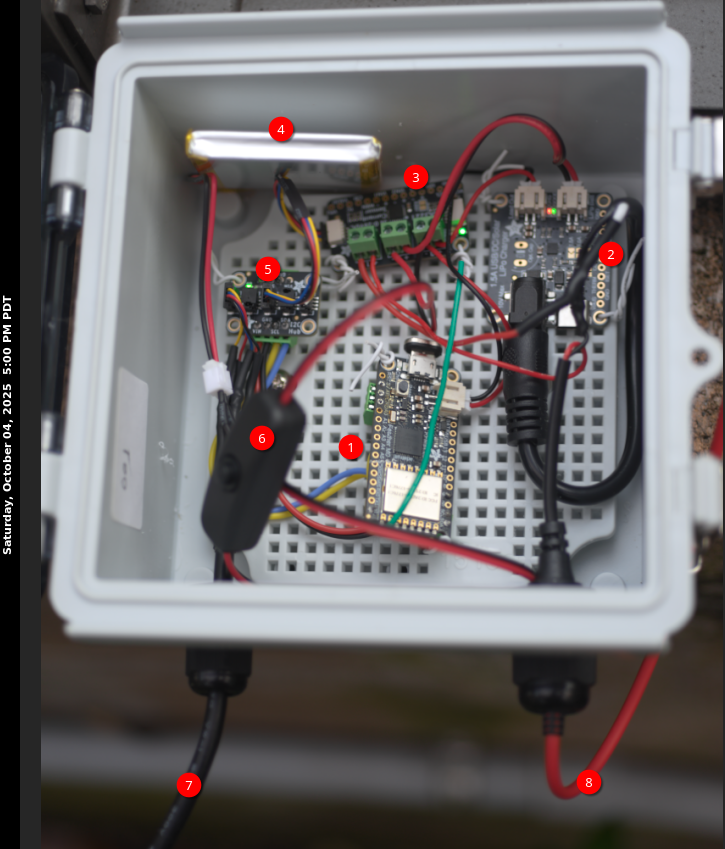
Note: missing is the date/time module which plugs into the hub and keeps accurate time
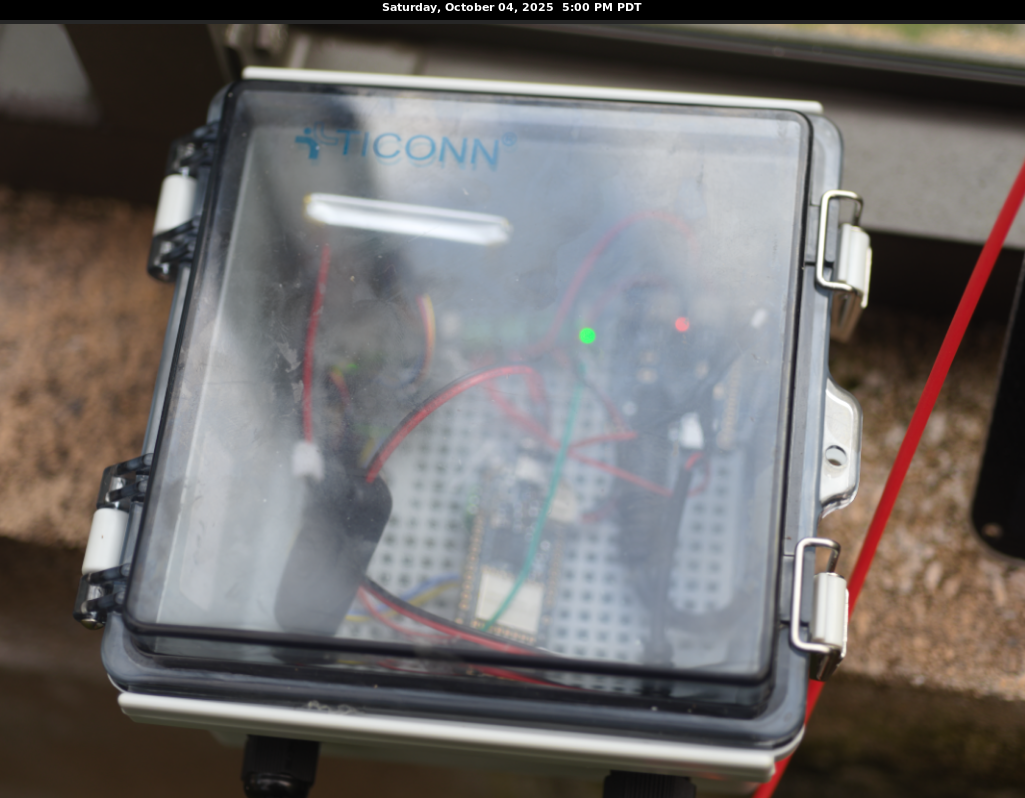
3 Sensors in the field
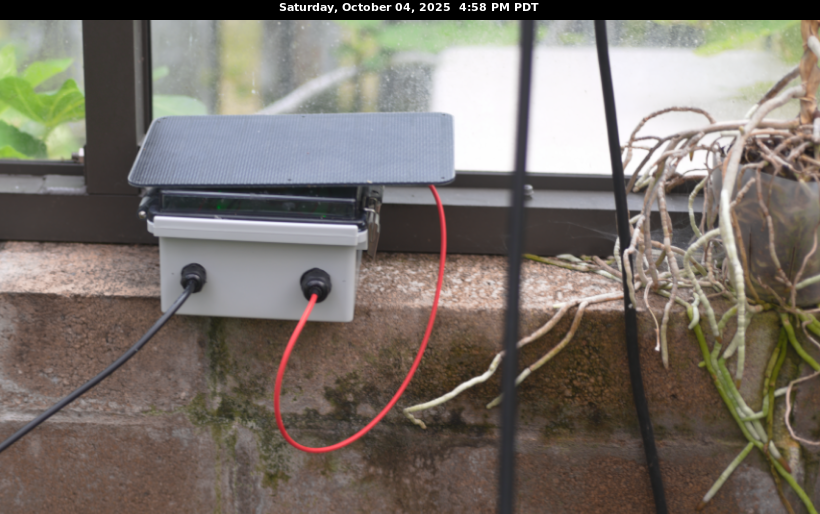
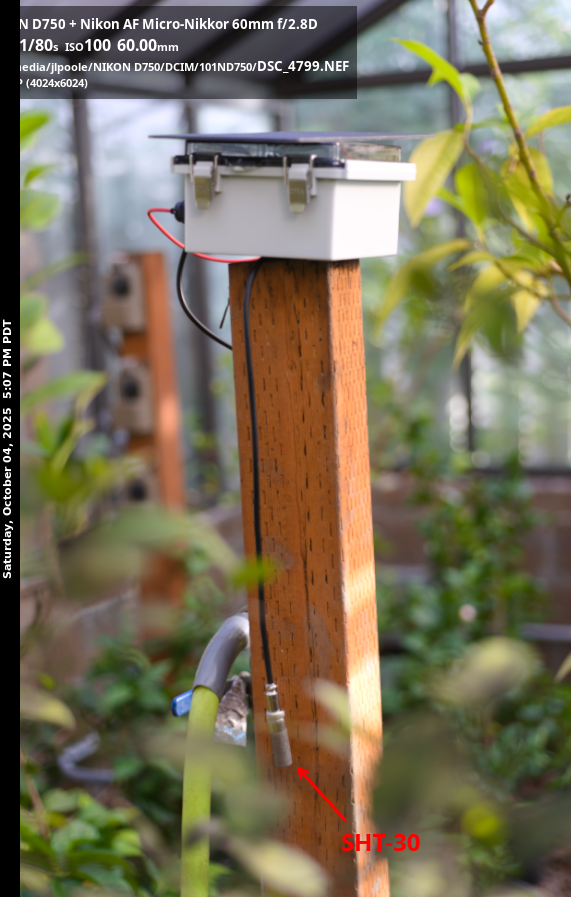
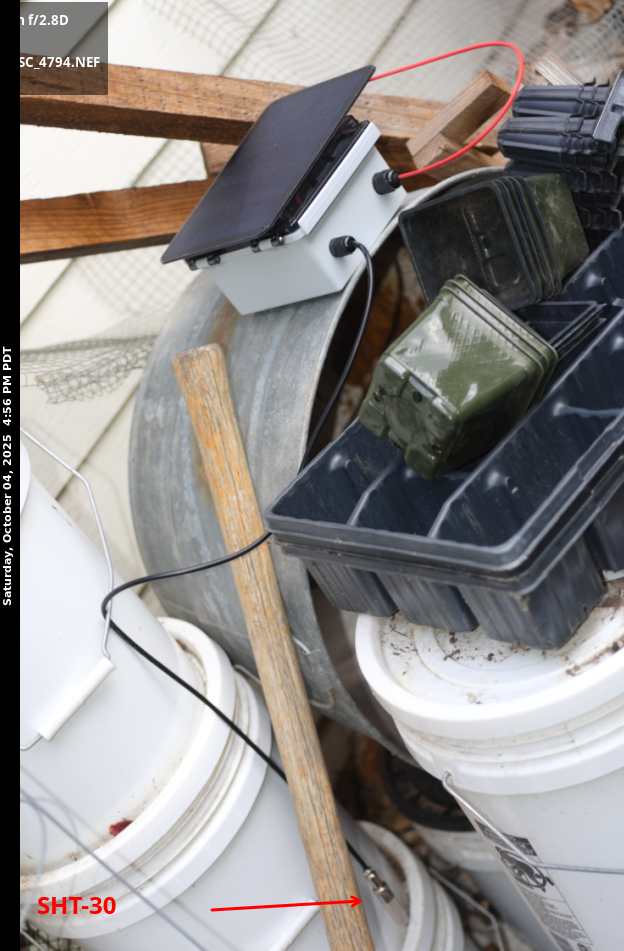
Bill of Materials
First sensor costs $220, subsequent sensors $205, base station $200 bringing the 3 sensor project to a cost under $900. Clearly way under budget.
Next Steps
The large TiCONN case and plenty of battery power and solar power will allow me to expand the functionality of each sensor as I might desire. With the hub, I can just plug in additional sensors, e.g. light and CO2, or unplug as appropriate. I have the radio infrastructure set up so it is very simple to add more components.
My plans are to add light monitoring having in mind to add LED lights to supplement and/or augment light. Growing orchids in Salem, OR, is quite a different experience from growing them in Pasadena, CA, where the sun light is much more intense.
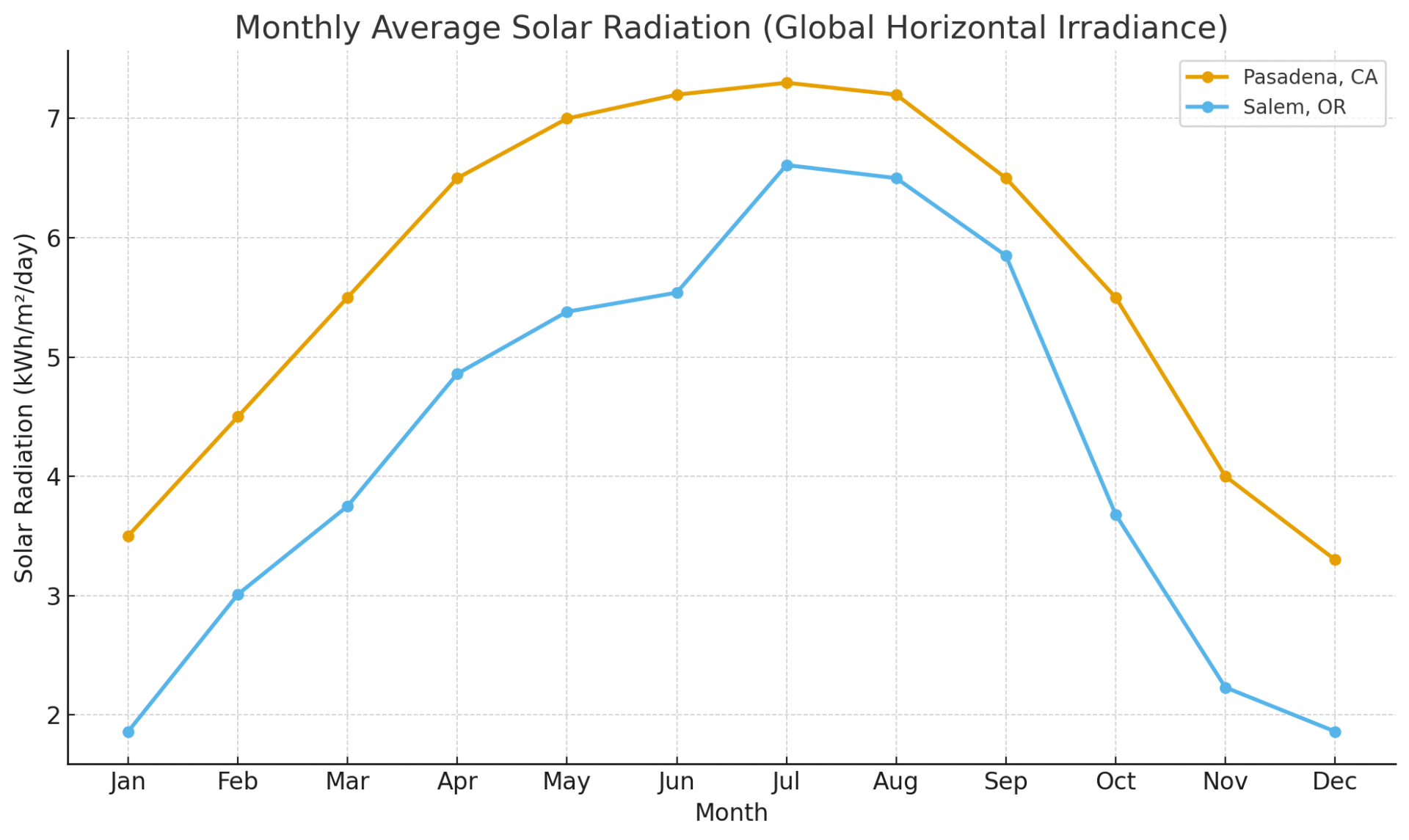
The above chart was prepared by ChatGPT. The chart is based on real NASA-/NOAA-derived data for Salem (via SolarEnergyLocal, which uses datasets from the NASA Surface Meteorology and Solar Energy (SSE) and NOAA/NREL NSRDB archives), while the Pasadena series is an estimated profile scaled from its known annual mean irradiance (6.17 kWh/m²/day) to reflect typical southern-California seasonality.
I’m also going to consider carbon dioxide feeding, that means I need to measure CO2 values accurately. The C02 generation can be achieved using a high efficiency gas burner designed to produce carbon dioxide. Average outdoors air has 450-500 parts per million of CO2. An orchid feeding would raise the levels to 1200-1800 ppm.
Testimonials
Here are some satisfied customers to this new environmental management. Their appreciation is demonstrated by the new plump roots they are sending out.
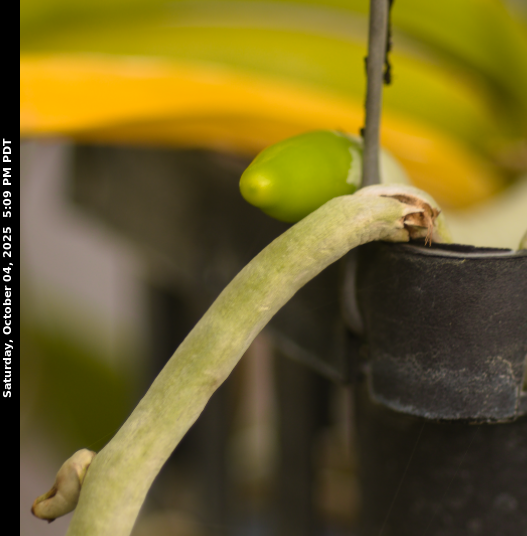
Mr. Root exclaims “Hi John!”
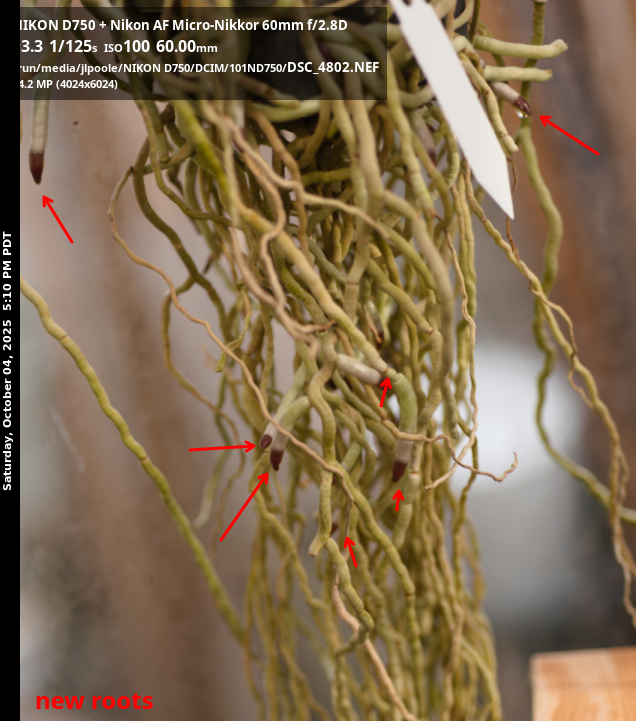
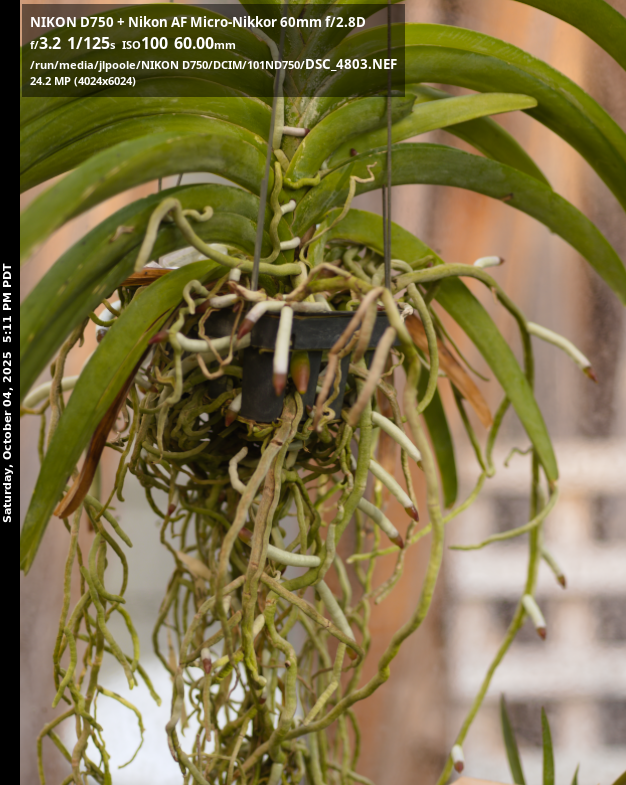
Update 12/6/25: Added heating (red bars = heater activated) and fogging (blue bars = fogger activated) events to plot.
Leave a Reply